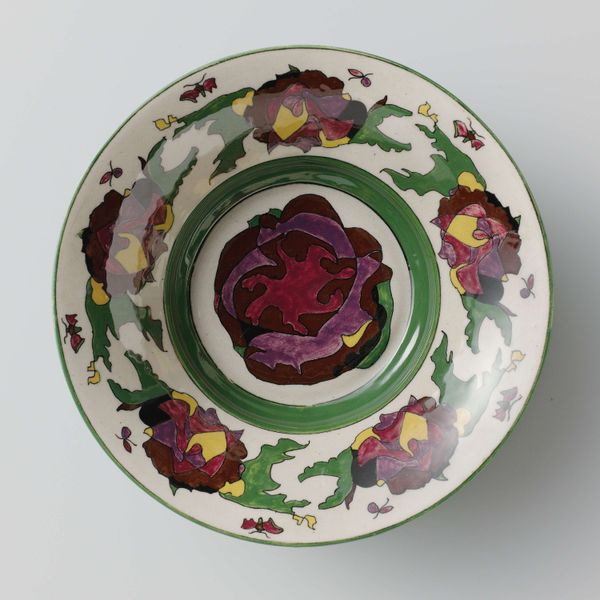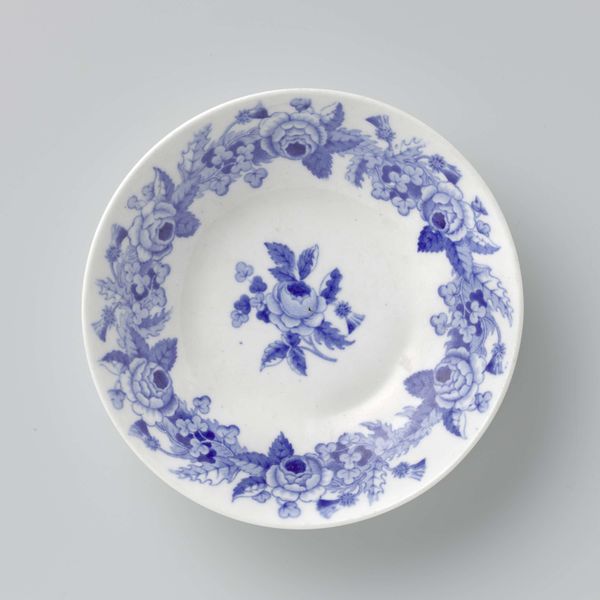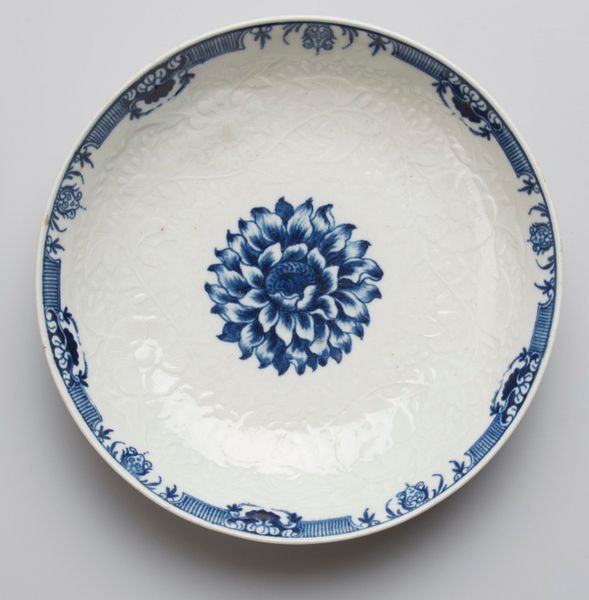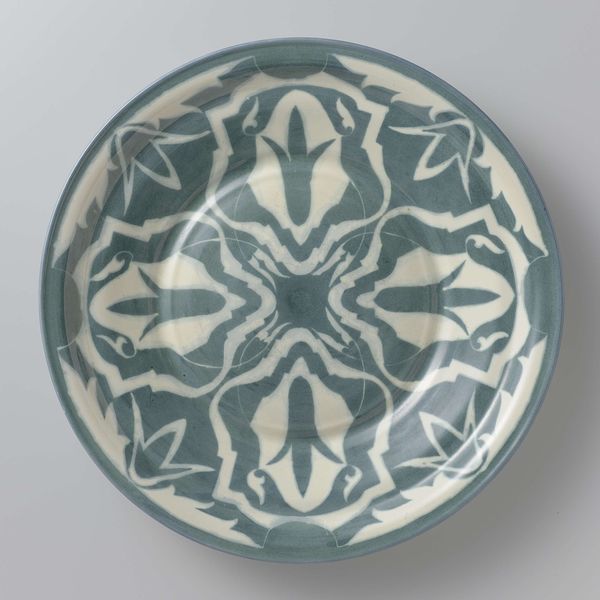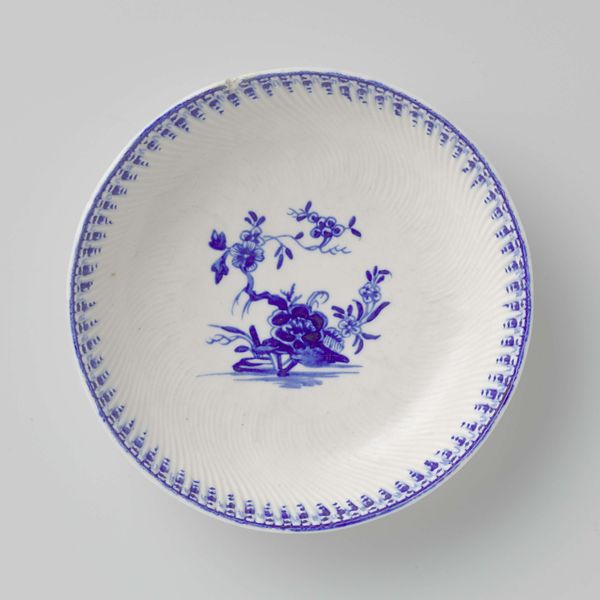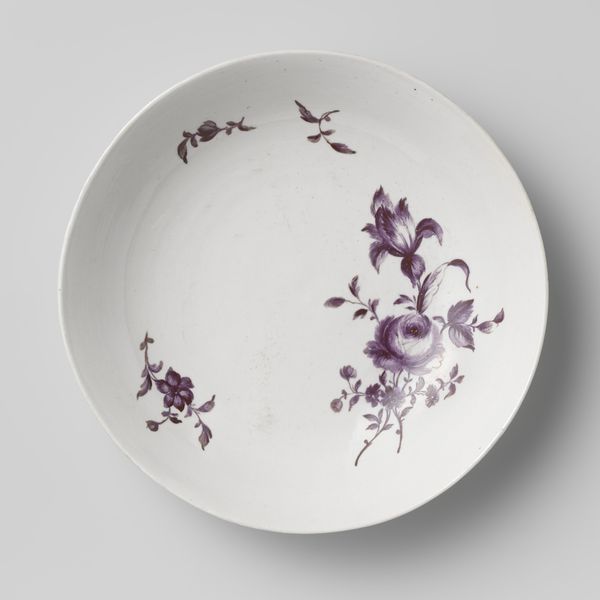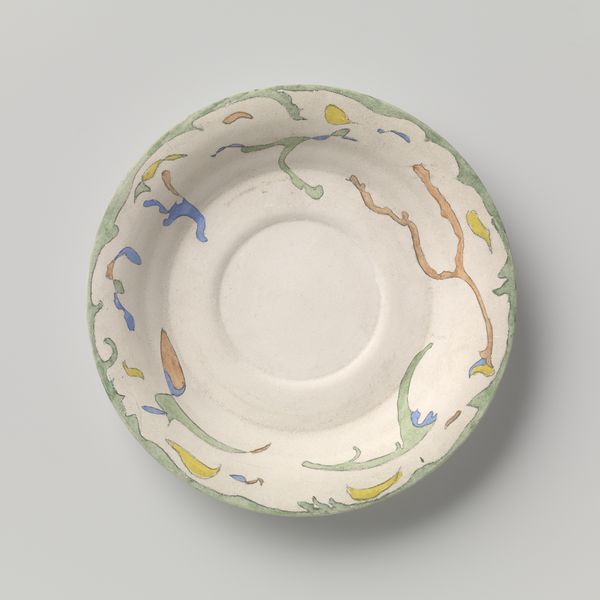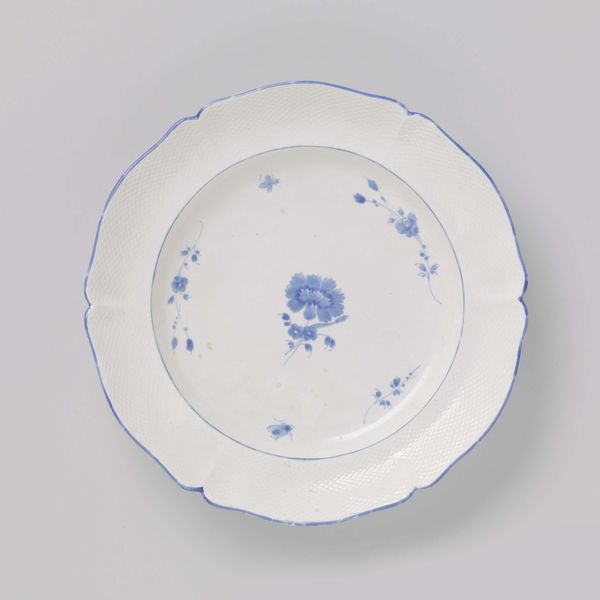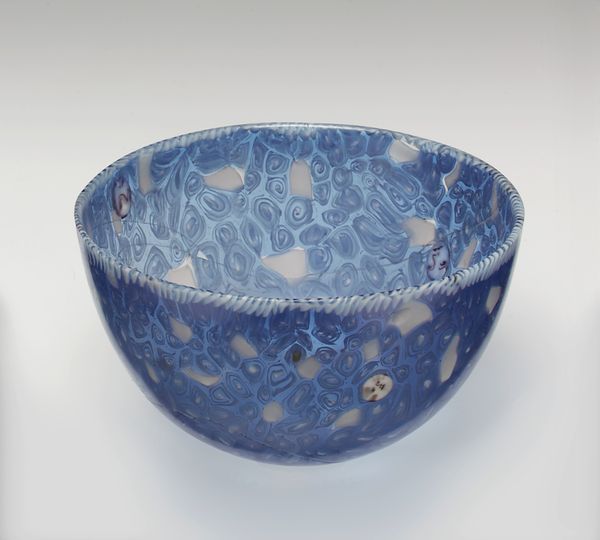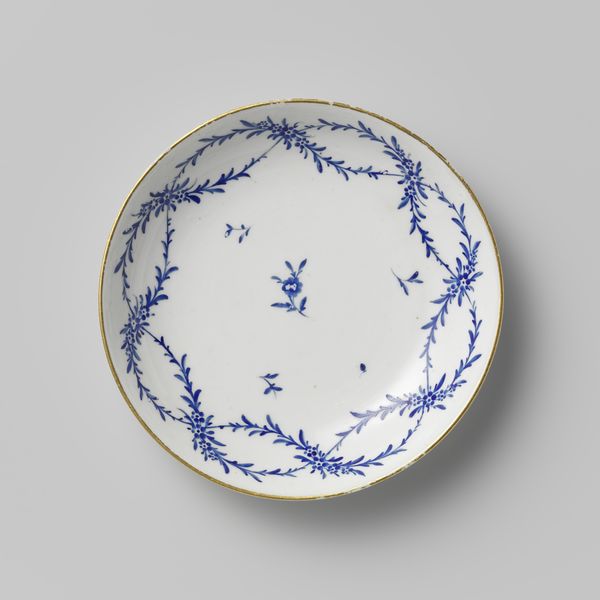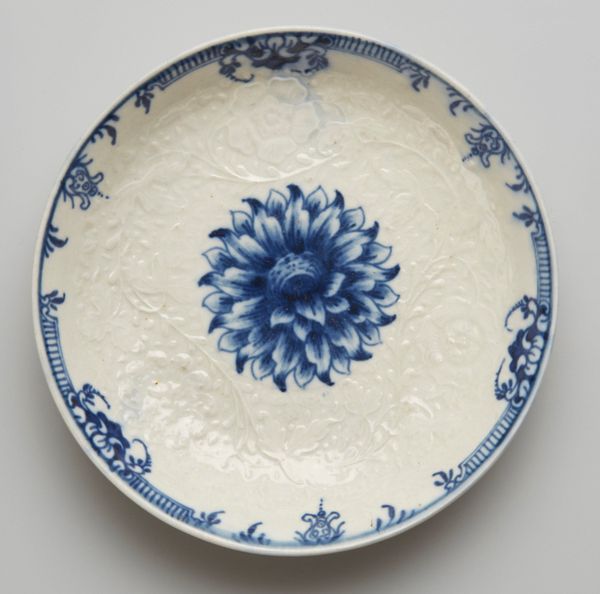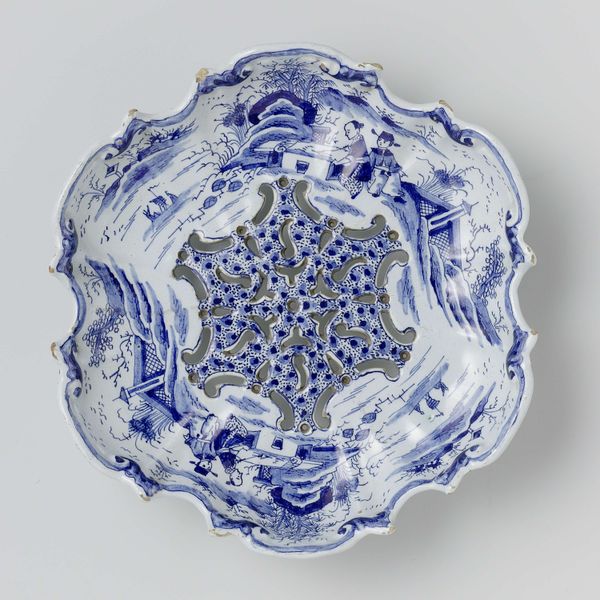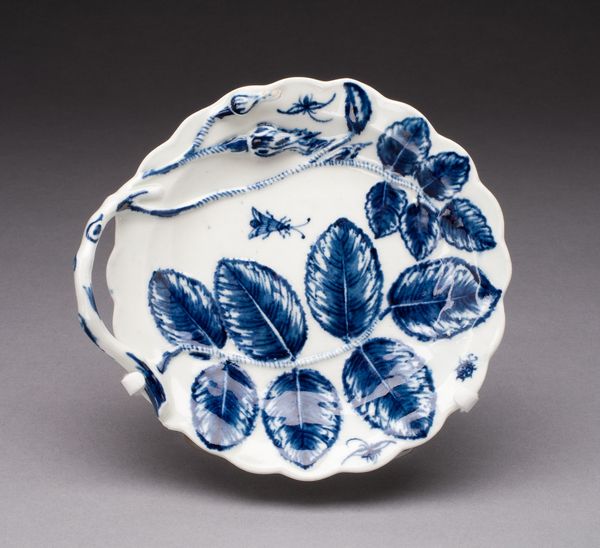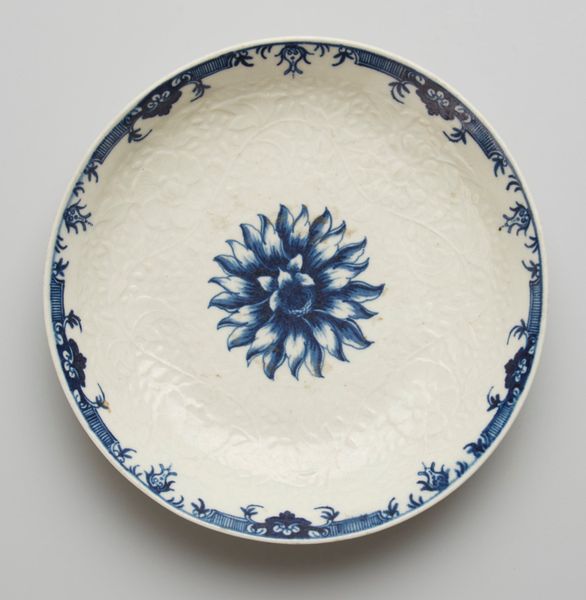
#
circular oval feature
#
decorative element
#
egg art
#
cake food
#
culinary art
#
food illustration
#
stoneware
#
ceramic
#
watercolour bleed
#
watercolour illustration
Dimensions: height 9.1 cm, diameter 35 cm
Copyright: Rijks Museum: Open Domain
Curator: Welcome! Today, we're looking at "Bowl with the 'Scheel' (Squint-eyed) pattern," crafted around 1925 by N.V. Plateelbakkerij Ram, likely using stoneware or ceramic materials. Editor: The bowl's decoration seems rather playful and naive, almost child-like, particularly the stylised floral patterns in mauve and blue. What elements stand out to you? Curator: Well, let’s consider the process of production here. It's a ceramic bowl, likely mass-produced but hand-decorated, suggesting a blurring of art and craft. Think about the labor involved. The ‘naive’ qualities you notice likely come from the quick, repetitive motions of the painter, responding to the pressures of factory work. How do the materials themselves contribute to the overall aesthetic, in your opinion? Editor: That's an interesting point. The smooth ceramic surface allows for vibrant colors, and the fact that it’s functional changes our perception. I initially thought of it as just decorative, but understanding the production gives it a new dimension. Does the term "Scheel" have anything to do with it? Curator: Exactly! The term "Scheel" might refer to the visual distortion in the painted design – the almost winking or squinting effect from the asymmetrical florals. This asymmetry pushes back against perfect machine-made aesthetics. Considering the context, what kind of consumption was it intended for? A daily household object or a more precious commodity? Editor: I guess everyday use. Knowing this piece comes from a factory setting where the artist produces the object to sell in large quantities puts in perspective my perception of the work's value. Curator: Precisely! Considering both its materials and conditions of making encourages a closer consideration. Thank you for this insightful discussion. Editor: Thank you. I appreciate learning about the socioeconomic context that informs how and why a piece of art, especially functional art, is produced.
Comments
No comments
Be the first to comment and join the conversation on the ultimate creative platform.
